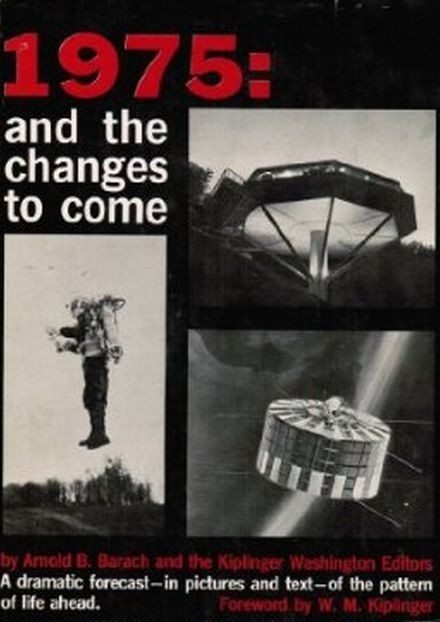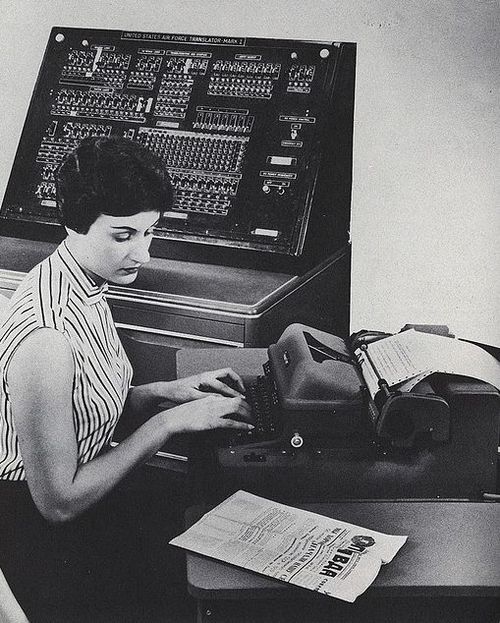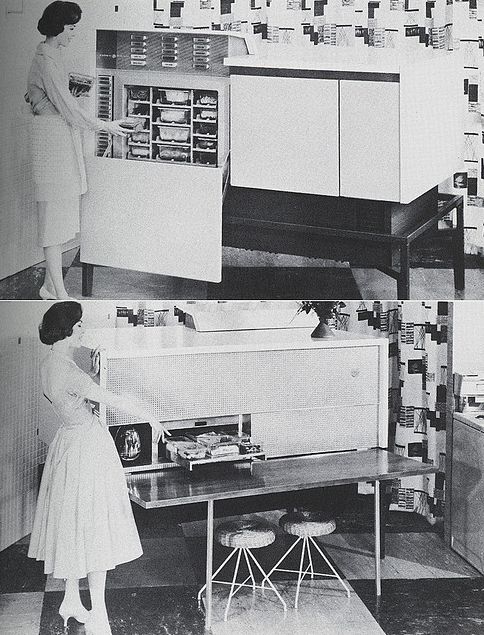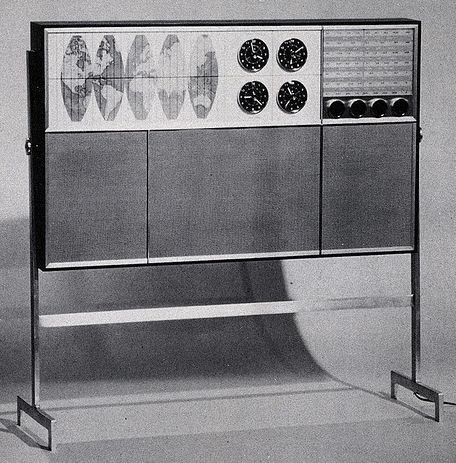
Last year, I stumbled across predictions from a century ago, and responded by making some predictions for a century ahead. Strangely enough, there was also a moment to look back over the last fifty years of technology developments around that time too.
So it must be whilst sitting around on holidays that these things come out as, during the last holiday, I found another interesting set of predictions from 1962 in a book by Arnold B Barach called 1975: And The Changes To Come.

These predictions were looking out to 1975, thirteen years ahead, and included a few interesting ones that have come true.
For example, Barach predicted translating machines where typists could copy stories from, for example, the Russian newspaper Pravda and a special machine would convert the Russian letters to punched holes in paper tape.
This tape could then be inserted into another machine, which would produce translation.
He forecasted that, by the 1970's, automatic translation of practically all foreign publications and books would be routine.

This came true a bit later, but certainly Google Translate gives translation of most text, albeit not always brilliantly as Google uses English as a base language, so German to Spanish is actually translated as German to English to Spanish. This can lead to some amusing mistakes.
Similarly, Google has solved the reference finder dilemma, with Barach realising that approximately 2,000 pages of books, newspapers, or reports are published somewhere in the world every 60 seconds, day and night, and the output is increasing by leaps and bounds (how right is that?).
Libraries will ultimately be forced to use computers for locating documents and references, since it will be so difficult otherwise to keep up with the printed material.
He goes on to more practical areas, like the kitchen in the average home.
Most devices will be under the floor in Barach’s future vision, with an ultrasonic dishwasher that cleans using sound waves.
Mind you, the attitude of the 1960s was rather different. Take this extract as an example:
Push a Button, Get a Meal.
Among tomorrow's "wife-savers" is this working model of a combination electronic oven and food freezer. Meals are prepared in advance and stored in the individual freezer compartments, each one labeled on the corresponding push buttons. At dinner time, the housewife pushes the appropriate buttons; and in less than half an hour, the full meal emerges at the rear end of the appliance, hot and ready to serve (lower picture).

from 1975: And the Changes To Come by Arnold B. Barach
Having said that, he was pretty much spot on when it comes to the future TV set:
What's On Delhi-Vision Tonight?
This is the ultimate in proposed television sets for a decade hence. It can receive television signals bounced from circling satellites, bringing programs from any city on the globe. The spot of origin of the program is indicated by a light on the world map in the upper panels. Round dials are clocks showing the hour in four major time zones. Dials at right are for tuning and sound control. The set is only three inches thick. On the reverse side it is equipped with an international stereophonic radio.

Anyways, quite a visionary book. I'll add it to my forecasts of the future media which includes Star Trek, Minority Report and War of the Worlds amongst its leading references.
Meanwhile, anyone fancy predicting thirteen years ahead to 2025?
Chris M Skinner
Chris Skinner is best known as an independent commentator on the financial markets through his blog, TheFinanser.com, as author of the bestselling book Digital Bank, and Chair of the European networking forum the Financial Services Club. He has been voted one of the most influential people in banking by The Financial Brand (as well as one of the best blogs), a FinTech Titan (Next Bank), one of the Fintech Leaders you need to follow (City AM, Deluxe and Jax Finance), as well as one of the Top 40 most influential people in financial technology by the Wall Street Journal's Financial News. To learn more click here...

